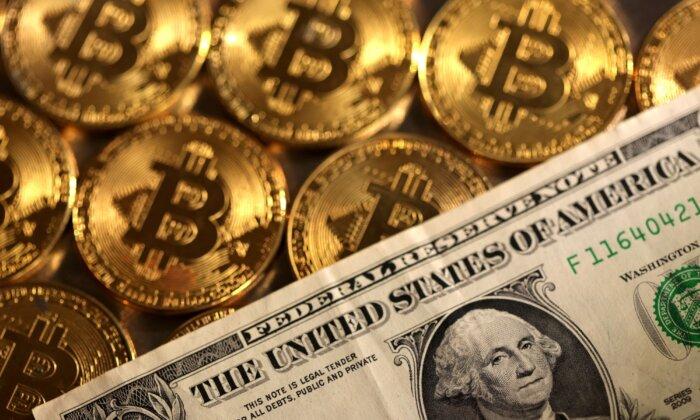In a recent interview with talk show host Seth Meyers, President Joe Biden mentioned that the United States has the strongest economy it’s had in decades. However, the reality shows that the 2023 gross domestic product growth adjusted for the accumulation of public debt was the worst since 1930. The U.S. national debt hit $32 trillion in June 2023 and surpassed $33 trillion in September 2023. The U.S. national debt now stands above $34 trillion and is rising by $1 trillion every 100 days. The trend is exceedingly worrying because the next trillion dollars comes faster every time—and all this is happening in an alleged recovery with strong employment growth and rising earnings.
Debt matters, and there is a reason why U.S. citizens do not see such a positive picture: negative real wage growth, diminishing purchasing power of salaries and savings, and a much tougher position for families to make ends meet.
Proponents of Modern Monetary Theory (MMT) defend that the government can run massive deficits if it needs to, and its only constraint is inflation. Reality shows that the government continues to spend regardless of an official accumulated inflation of 20 percent in four years and that it only uses any excuse to spend more than it collects despite rising tax receipts. The government does not reduce the deficit when inflation kicks in and continues to pass on the burden of debt and rising prices to families. MMT is simply an ideological ruse to allow the government to do what it wants with fiscal policy—only to find that there is no turning back when the disastrous results become apparent.
Inflation is evidence of monetary mismanagement, and persistent inflation is proof that the last economic agent that we should trust to defend the currency is the government.
No government truly defends the status of its currency as a reserve of value and generalized means of payment because it will always blame anyone except itself for the loss of confidence in the currency. And by the time citizens all over the world lose confidence in the U.S. dollar as a reserve currency, the damage will already be done, and, more importantly, its consequences will be paid by the average citizen of the United States, not by the incompetent administrators who made debt soar and deficits become permanent.
That is why MMT is such a dangerous idea to experiment with. When it fails—and it always does—it is you who pays the entire cost.
The U.S. dollar has not lost its position as a reserve currency yet, but that does not mean it will not happen. Risks build slowly but happen fast. When they do, it will be too late.
Monetary sovereignty is not a given and even less a blank check to allow the government to increase deficits and debt forever. Monetary sovereignty is lost faster than the blink of an eye when the world realizes that faith in the public accounts of the administration is gone.
Public deficits are money-printing. This is not “reserves for the private sector” but debt with the nation’s global creditors. When confidence in the ability to repay debt is eroded, it manifests through a higher cost of borrowing and higher inflation. Governments always think that inflation is not their fault and ignore the consequences.
It is no surprise to see Bitcoin surpass $62,000 when public debt soars to $34 trillion. With inflation, higher rates, the loss of purchasing power of wages, and rising interest expenses, another alarm bell shows us that the fiscal situation of the United States is unsustainable. The only thing that has kept the U.S. dollar afloat as a reserve currency is that the fiscal and monetary imbalances of its competitors are worse. But that is only a battle between fiat currencies, in which all of them are eroding the value of printed money. The destruction of the U.S. dollar is also evident in the high level of gold relative to most fiat currencies and the gradual loss of confidence of citizens who understand that this insane accumulation of debt is going to end with much weaker growth, less productivity, and a massive destruction of the real value of wages and savings.
Bitcoin is yet another alarm bell that the statism crowd ignores.
The statisticians maintain that deficits do not matter because nothing has happened yet. It is like saying that driving at 200 miles per hour is not a problem because you haven’t killed anyone yet. Furthermore, the signs that indicate that fiscal imbalances should be eliminated rapidly are plain to see. Americans are suffering a loss of real wages, a loss of access to essential goods and services, higher taxes, and the prospect of a stagnant economy bloated with debt that may soon be worthless, driving the currency with it.
To say that nothing has happened is an insult to the families that have to go through two and three jobs to make ends meet and that find it increasingly difficult to purchase their essential goods or buy a home and to the businesses riddled with taxes.
No, Bitcoin may not kill the U.S. dollar—but the U.S. government may if it continues down this path.







